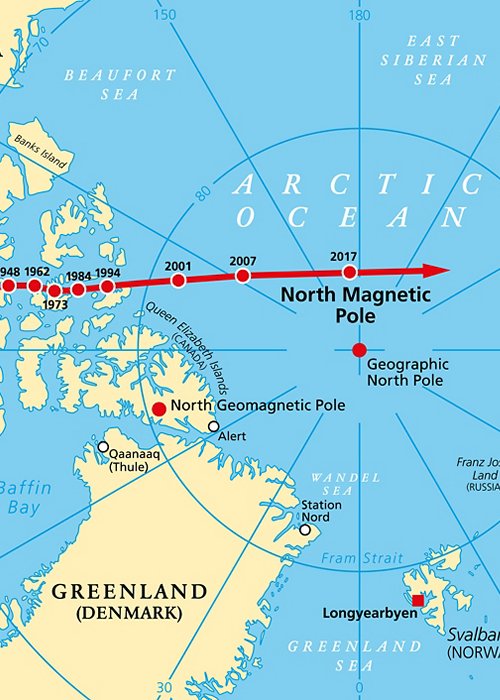A new study has revealed that climate change-induced ice melt could shift the Earth’s geographical poles in the coming decades. As the polar ice caps melt and redistribute ocean mass across the globe, the geographic North and South Poles may migrate by up to 27 metres by 2100, due to changes in the planet’s rotational axis. The research, published in Geophysical Research Letters, warns that such shifts could disrupt satellite and space navigation. As Earth rotates, shifts in the planet’s mass distribution cause it to wobble on its axis, much like a spinning top. Many of these wobbles are regular and predictable – caused by changes in atmospheric pressure and ocean currents – while others stem from interactions between the Earth’s core and mantle. Recent studies suggest that ice cap and glacier melt may also affect mass distribution and push the poles off course. In the new study, researchers from ETH Zurich analysed polar motion data from 1900 to 2018, alongside projections of ice cap melt, to estimate how far the poles might shift under different climate change scenarios. The team found that under a worst-case greenhouse gas emissions scenario, the North Pole could drift over 27 metres west by 2100. Under a more optimistic emissions scenario, it could still shift as much as 12 metres from its 1900 position. Meltwater from the Greenland and Antarctic ice sheets played the largest role in their simulations, followed by glacier melt. “This effect is essentially outpacing the impact of glacial isostatic adjustment, where Earth’s solid surface rebounded after the end of the last Ice Age,” the team noted. In other words, Earth’s crust sank under the massive weight of Ice Age glaciers and rose again as they melted, altering weight distribution in the crust and shifting the poles. A shift in Earth’s rotational axis could interfere with space and satellite navigation, since spacecraft positioning relies partly on that axis as a reference point. If the axis drifts over time, it may become harder to pinpoint a spacecraft’s precise location. Future research could involve analysing paleoclimate data to understand how far the poles shifted during natural climate changes in the course of millions of years: insights that may reveal the true scale of human impact on polar motion.



